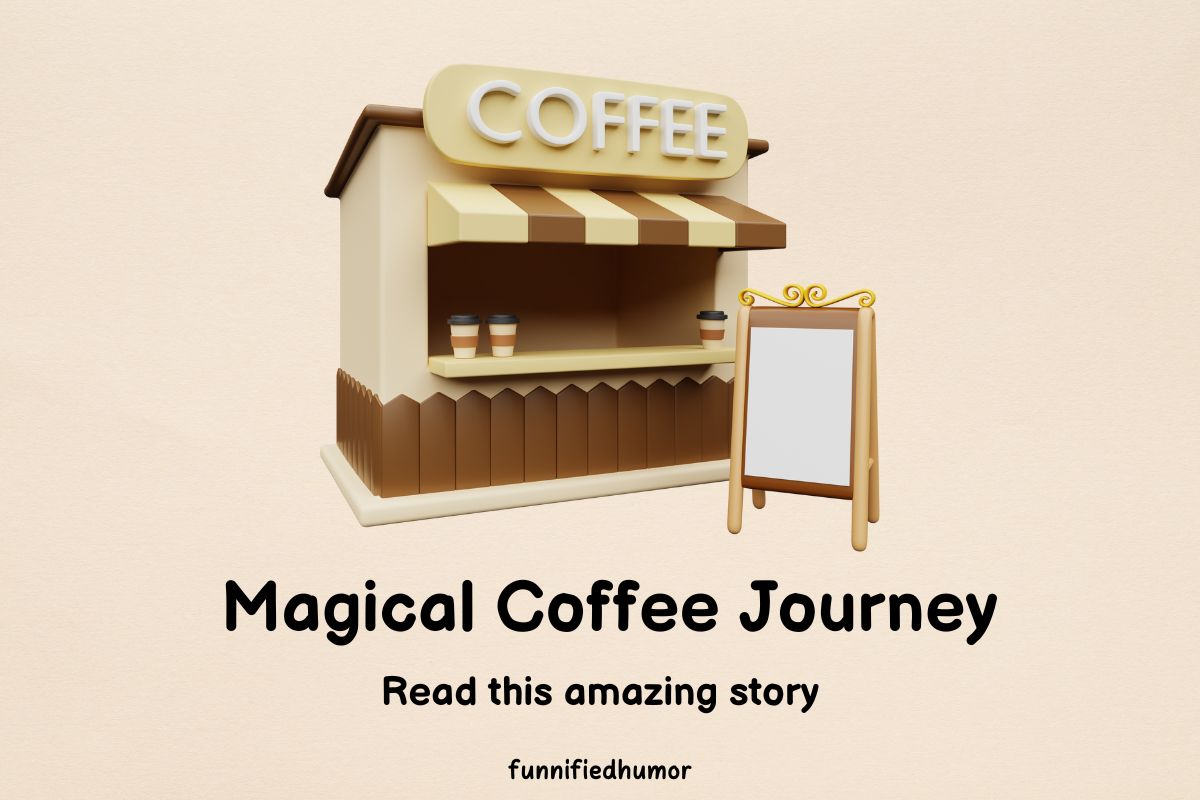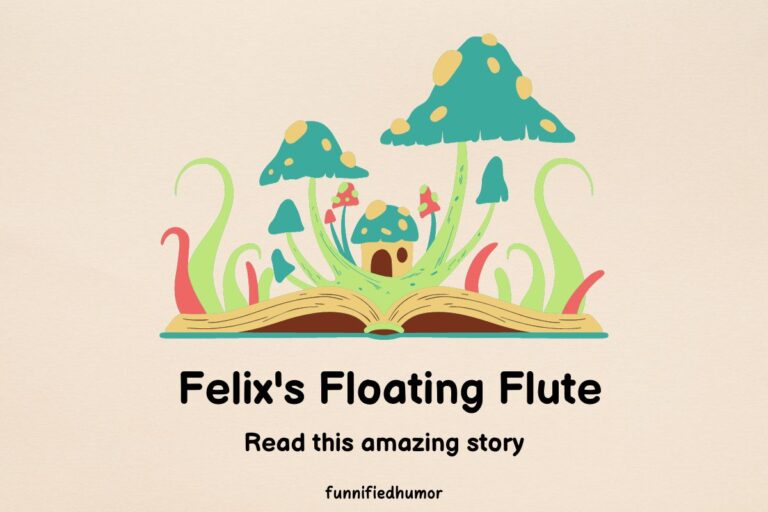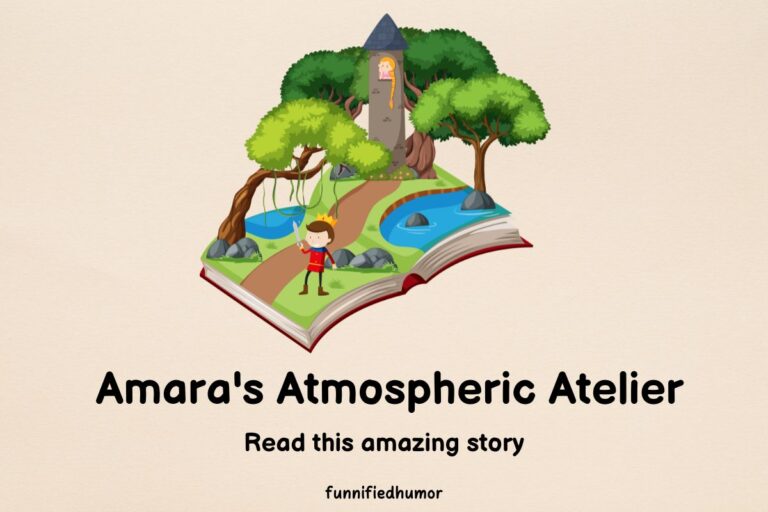Magical Coffee Journey

In the heart of Paris, nestled between historic buildings with ornate balconies, was a quaint café named “Café du Charme”. On this sunny day, Benjamin, an American tourist, sat outside, soaking in the vibrant Parisian atmosphere.
The café was bustling with locals and tourists alike, all enjoying the aromatic brews and delectable pastries.
Benjamin had with him a unique coffee cup. The cup was earthen, hand-painted with delicate strokes of blue and gold, a treasured gift from his late grandmother. As he sipped his cappuccino, he penned down thoughts in his journal, inspired by the city around him.

A waiter, Pierre, approached with a friendly smile. “Monsieur, would you like a refill?”
“No, thank you,” Benjamin replied, his gaze still fixed on a young couple dancing to a street musician’s tune. “Just the check, please.”
Moments later, engrossed in the world around him, Benjamin paid and absentmindedly left, forgetting his treasured cup on the table.
Pierre, clearing the table, noticed the abandoned cup. “Ah, another lost item,” he mused. Instead of placing it with other lost and found items, he set the cup on a special shelf behind the counter, hoping its owner would return.
That evening, as the golden hues of sunset embraced Paris, Adrienne, a struggling writer with raven-black hair and deep hazel eyes, stepped into the café. She had been battling writer’s block for weeks and hoped the café’s ambiance would be the muse she desperately sought.
“Un café au lait, s’il vous plaît,” she requested.
As Pierre prepared the drink, his eyes landed on the forgotten cup. Without a second thought, he poured the coffee into Benjamin’s cup and served it to Adrienne.
Adrienne, taken by the cup’s beauty, whispered, “This is beautiful. Is it new?”
Pierre chuckled, “It was left behind by a tourist earlier today. Consider it a loan for the evening.”
Gratefully, Adrienne sipped her coffee, the warmth of the cup seeping into her soul. She opened her laptop and, inspired by the serendipity of the moment, began to type furiously. The story of a lost item traveling through different hands and changing lives formed in her mind. She felt a connection, as if the cup whispered tales of love, loss, and hope to her.
Hours later, reinvigorated and with pages of her story written, Adrienne left the café. But in her excitement, she took the cup with her, forgetting it wasn’t hers to keep.
As Pierre locked up for the night, he realized the special cup was gone. “Ah, monsieur’s cup has started its journey,” he mused, hoping it would find its way back someday.
Meanwhile, Benjamin lay awake in his hotel room, a pang of regret in his heart. He would begin his search for the cup in the morning, unaware that it had already started touching lives in magical ways.
The soft rays of dawn peeked through the narrow alleys of Paris. Adrienne woke up with the same rush of inspiration she’d felt the previous night. As she made her morning coffee, she saw the beautiful cup she’d unintentionally taken from the café.
A note was attached to her fridge from a few days ago: “Visit Clara’s Flower Shop”. She was to interview Clara, the owner, for a feature in a local magazine.
Thinking it would be a perfect way to return the cup, Adrienne decided to gift it to Clara filled with fresh flowers.
Clara’s flower shop was a fragrant sanctuary of roses, daisies, and violets. The soft tinkling of the bell announced Adrienne’s entry. Clara, a middle-aged woman with streaks of silver in her wavy brown hair, greeted her warmly.
“Bonjour! You must be Adrienne,” Clara said, shaking her hand.
“Yes, and I’ve brought you a small gift,” Adrienne said, handing her the coffee cup, now brimming with a bouquet of fresh daisies.
Clara’s eyes widened with admiration. “Oh, it’s exquisite! Thank you.” She took a moment to caress the cup’s intricate design. “It reminds me of a similar cup my mother used to own.”
As their conversation deepened, Clara shared her story of heartbreak. She’d recently ended a long-term relationship and felt the weight of solitude. The flower shop, inherited from her mother, was her only solace.

One evening, a few days after Adrienne’s visit, a tall, dapper man with greying temples stepped into Clara’s shop. It was Henri, a retired detective who’d frequented the shop for years. He always had a special affection for Clara, but they’d lost touch recently.
“Clara,” he greeted with a soft smile, his eyes resting briefly on the cup holding daisies. “I’ve missed our conversations.”
Clara looked up, her face lighting up. “Henri! It’s been so long. How have you been?”
“I retired last year,” Henri revealed, a hint of sadness in his eyes. “I’ve felt a bit lost without my work.”
Clara poured tea into two cups, using the special one Adrienne had gifted her. They sat, reminiscing old times, and as the hours flew, Henri opened up about his loneliness.
The cup sat between them, almost as if it was listening, absorbing their stories of heartbreak and hope. By the end of the evening, Henri mustered the courage to confess his feelings.
“Clara, I’ve always had a soft spot for you. Would you consider going out for dinner with me sometime?”
She looked into Henri’s sincere eyes and nodded. “Yes, I’d like that.”
A week later, after their wonderful dinner date, Henri returned to the flower shop. In his excitement to surprise Clara with a bouquet, he accidentally knocked over the precious coffee cup. Shattered pieces lay on the floor.
“I’m so sorry, Clara,” he whispered.
“It’s okay, Henri. It was just a thing. Our memories with it will always remain.”
Deciding to give the broken cup another life, Clara planted a succulent in one of its larger fragments, placing it in her shop window.
Days later, an art student named Emilia saw the planted fragment and offered to buy it for an art project, and once again, the remnants of the cup were on the move.
Emilia, with her vibrant red hair and a penchant for seeing beauty in the broken, was in her final year at École des Beaux-Arts. She had been struggling to find the right centerpiece for her graduation project – an installation that celebrated resilience and rebirth.
The fragmented cup, with the succulent sprouting from it, became the heart of her exhibit. Around it, she built a narrative of objects that had been discarded, shattered, or forgotten but had found new purposes.
Word about Emilia’s evocative exhibit spread, drawing attention from the art community and locals. Among the attendees was Luc, a journalist known for his sharp critiques. Intrigued by the centerpiece, he approached Emilia.
“This broken cup… it tells a story,” Luc mused, adjusting his glasses.
Emilia nodded, her eyes shining with passion. “It represents life’s unpredictability. Sometimes, things break, but it doesn’t mean their journey ends. They find a new purpose, a rebirth.”
Touched by her perspective, Luc wrote a compelling piece about the exhibit, emphasizing the importance of resilience. His article became a sensation overnight, giving Emilia the recognition she deserved.
One day, an elderly woman named Madeleine, captivated by Luc’s article, visited the exhibit. She was drawn to the broken cup fragment with the succulent, tears forming in her eyes.
“This design… it’s eerily familiar,” she whispered.
Emilia approached her, “It was a gift I purchased. The design resonated with me. Do you recognize it?”

Madeleine nodded, her voice shaky, “Years ago, I gifted a similar cup to my grandson. He treasured it.”
Realizing the possible connection, Emilia offered the fragment to Madeleine. “If this can bring some happiness or memories, please take it.”
Madeleine gratefully accepted, cradling the piece close to her heart. The exhibit ended, but the legacy of the broken cup lived on.
Madeleine’s grandson, Benjamin, had been searching for his lost cup, retracing his steps to various spots in Paris. He was unaware of the cup’s journeys and transformations, but he felt its loss profoundly.
One evening, Henri, reminiscing about the cup, decided to help Benjamin in his search. After all, his detective instincts never truly retired.
Piecing together its journey from Clara’s accounts, Henri reached out to Emilia, who directed him to Madeleine. When Henri approached Benjamin with the news, he was filled with a whirlwind of emotions.
“Your cup has had quite an adventure,” Henri chuckled. “But I believe this fragment, with its young plant, is a part of your cherished possession.”
Benjamin held the piece, feeling a flood of memories. “It might be broken, but its essence remains. Thank you, Henri.”
Months later, Benjamin, with the cup fragment and thriving succulent, revisited Café du Charme. Pierre, recognizing him instantly, exclaimed, “Ah, the owner of the magical cup! We wondered if we’d see you again.”
Sharing the cup’s tale, Benjamin set the fragment on the table, symbolizing its journey and the lives it touched. The café patrons, hearing the story, were deeply moved.
Adrienne, who was there working on her now-successful novel inspired by the cup, approached Benjamin. “Your cup started my journey as a writer,” she confessed.
The two shared a heartfelt conversation, exchanging tales of the past months. A bond formed, anchored by the little fragment and its verdant companion.
As the sun set, casting golden hues on the Parisian streets, Benjamin left Café du Charme, the fragment in hand. Though he had lost the original cup, he gained countless stories and connections, reminding him that sometimes, it’s not about the object but the memories and bonds it creates.






